|
If there's anything in this world that can make us feel small and prove to us we know very little, it is the huge space that surrounds us with billions of stars that may be an incredible distance away, yet light our night sky just the same, and will continue to do so long after we're gone.
The photos you'll see in this post come from the Annual Astronomical Photography by the Greenwich Museum, and you are invited to enjoy the astounding beauty of our universe in its rarest moments.
Click on the photos to see them in full size (recommended)
|
1. The Rise of Angels by Brad Goldenfeit, USA |
 |
| After a scary meeting with a black bear, photographer Brad felt a great relief when he got to his destination. In this wondrous photo, you can see a meteor streaking through the night sky with the milky way clearly seen next to it. It was taken from the top of Mount Rainier in Washington, 4,392 meters above sea level. The white points of light along the rocky track are the lights of the climbers ascending the top. |
| |
| 2. Northern Lights in Panorama, by Jen R. Olsen, Norway |
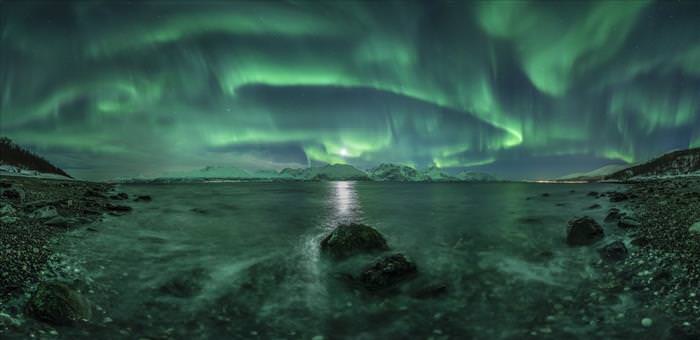 |
| The green northern lights dance over Lyngenfjord , the longest fjord in Troms, Norway. The most common color of this natural phenomenon - green - is created by oxygen molecules breaking as they hit the solar particles escaping the sun's atmosphere. |
| |
| 3. C/2014 Q2 Lovejoy by Michael Jager, Austria |
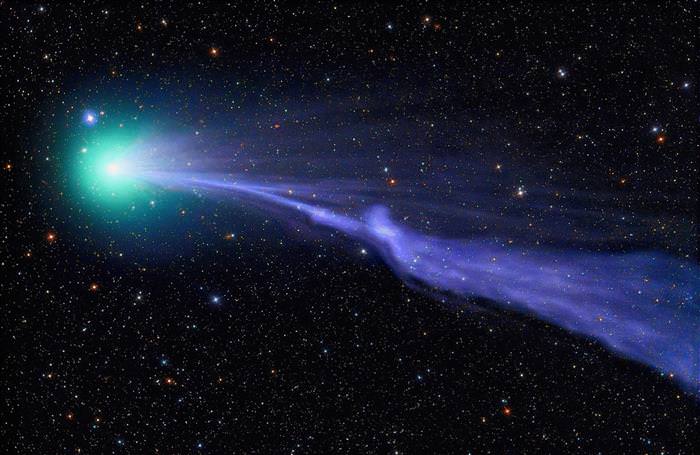 |
| The Lovejoy comet sails through our solar system, leaving a green shimmer and blue-colored dust in its wake. Near the end of 2014 and during early 2015, the comet could be seen with simple binoculars. The green-blue light it makes, clearly seen against the black night's sky, is caused by burning of gas. |
| |
| 4. The Quiet Before the Storm by Julie Fletscher, Australia |
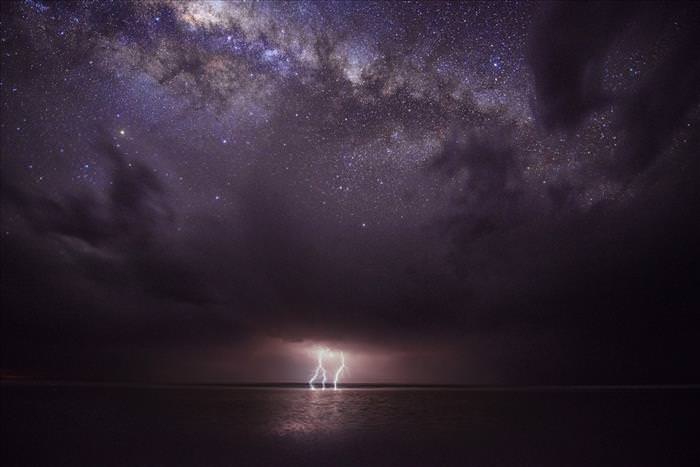 |
| A natural lightshow caused by a thunderstorm, menacing at a distance. The photographer witnessed this storm from the Kati-Thanda Lake National Park in South Australia for two hours before she took this terrific photo. |
| |
| 5. Full Moon Over the Alps by Stephano De Rosa, Italy |
 |
| The wondrous view of the full moon, sinking behind the red-colored alps, is a gift for anyone who makes the climb up. |
| |
| 6. Karin Nebula in 2 colors by Terry Robinson, Canada |
 |
| The giant star Eta Carina glows against the background of the massive clouds and gas that make up the Carina Nebula. This is one of the biggest nebulas without definitive borders that we can see, and it is 4 times as big as the famous Orion nebula. |
| |
| 7. M42 Subtle V1 by Patrick Giliand, England |
 |
| The Orion Nebula is indeed one of the most known astronomical objects in our universe. This photo shows the huge size of its molecular cloud. The pink and orange at the center of the nebula are created by super-hot hydrogen. |
| |
| 8. Solar Bulge by Gary Palmer, England |
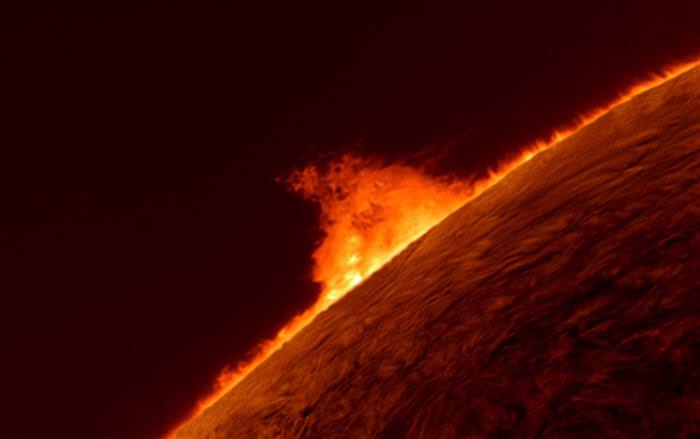 |
| Hot strips of plasma exit the edges of our sun, a phenomenon that occurs over thousands of kilometers, with the largest of them over 800,000 km long - almost the radius of the sun itself. |
| |
| 9. Hercshel 36: The Heart of the Lagoon by Leslo Francis, Hungary |
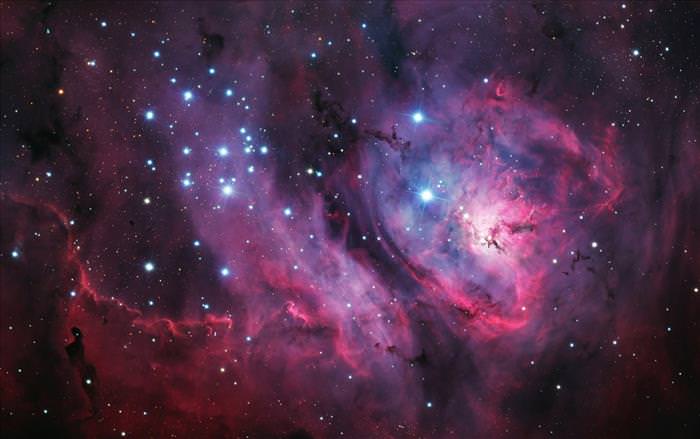 |
| About 5,000 light years away is the star constellation called the Lagoon Nebula, right on the star cluster making up Sagittarius. Although it is many light years away, the Lagoon Nebula is actually one of the constellations that can be seen without aid when conditions allow it, especially from the north of the planet. |
|
|
| 10. "IC443" by Patrick Gililand, England |
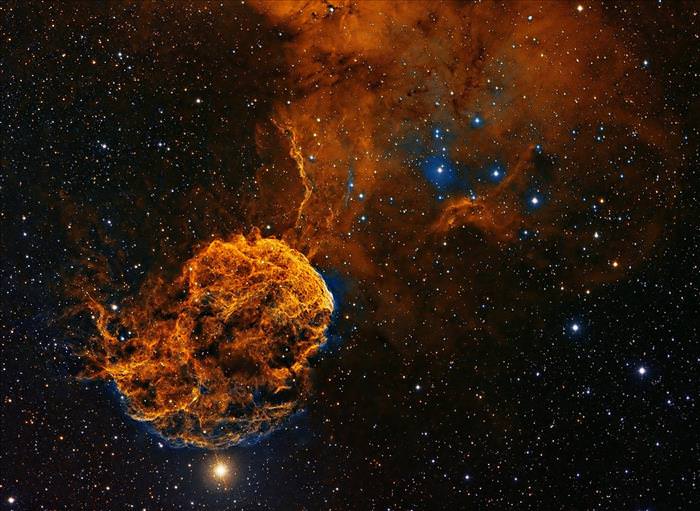 |
| In the Gemini start cluster you can find IC443, which is the leftover of a supernova - a star that exploded about 30,000 years ago. |
| |
| 11. The Moon and Antelao by Marcel Gilia, Italy |
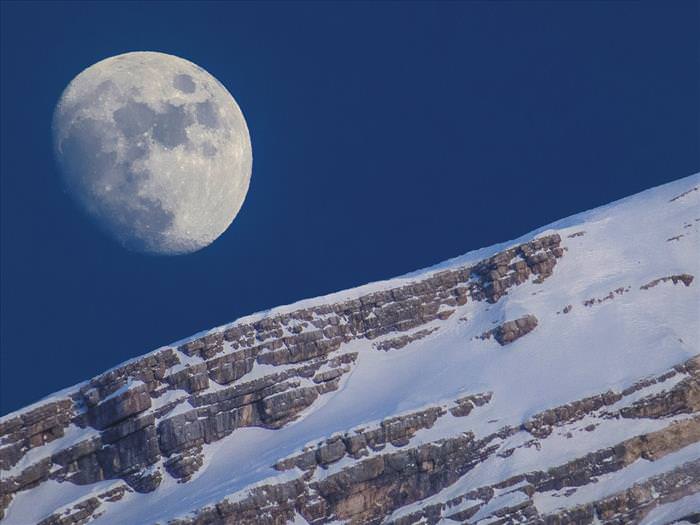 |
| A late afternoon at San Vito di Cadore in Italy, while the moon shines upon Mount Antelao. |
| |
| 12. Green and Purple Explosion by Ron Enegvo, Norway |
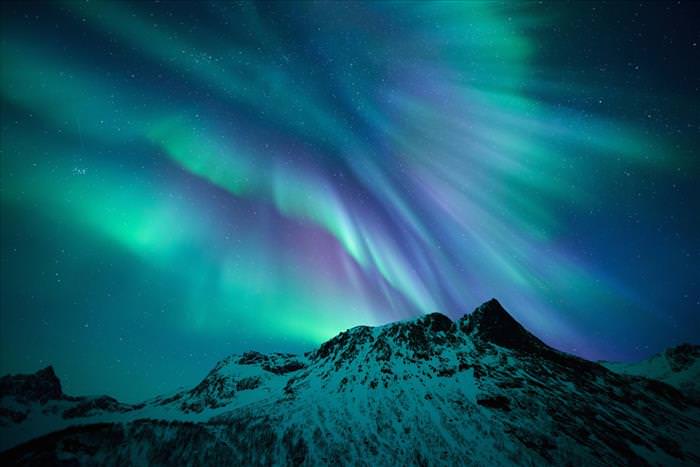 |
| This photographer lives in Norway and has seen the northern lights aplenty. But on January 21st, 2015, he witnesses the strongest colored northern lights he's ever seen - an explosion of purple and green. There, above Mount Senja, oxygen is responsible for the green light and nitrogen creates the purple one. |
| |
| 13. NBv5 Rosetta by Juan Ignesiu Himnez, Spain |
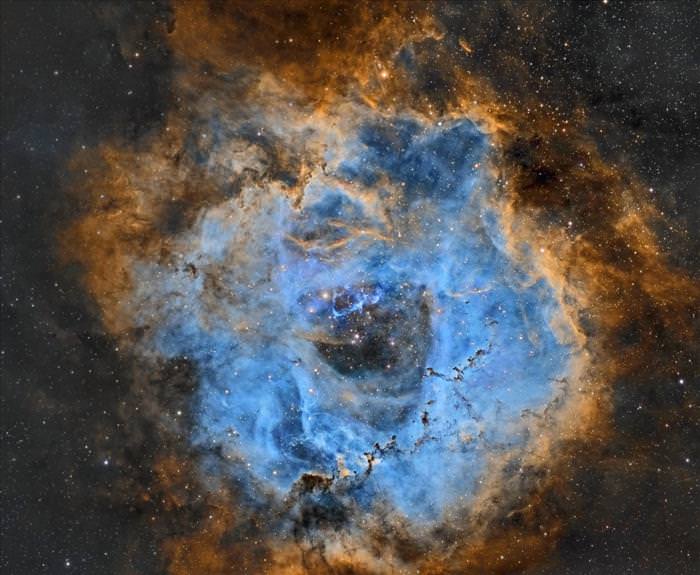 |
| The Rosetta nebula is 50-light-years thick and can be found at the edge of the unicorn start cluster. At the heart of the nebula are the youngest, hottest stars warming up the surrounding environment and releasing enormous amounts of X-ray radiation. |
| |
| 14. Star trail Above Lake Green by Dan Bear, USA |
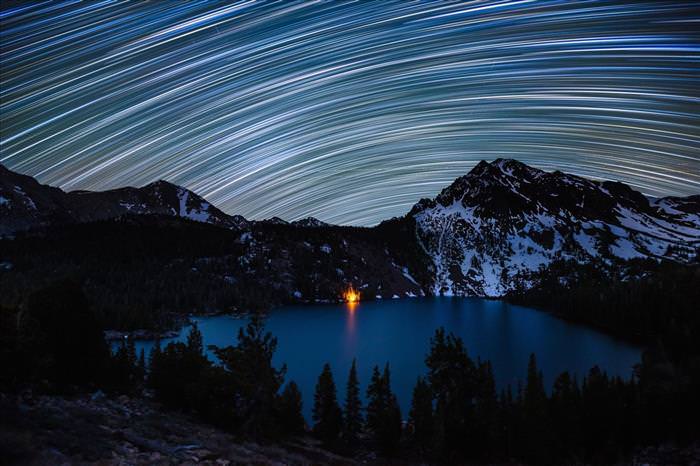 |
| The star trail lights the night sky above Green Lake in California. Star trails attract many photographers who use a long exposure technique to capture them. While they supposedly represent the movement of stars in the sky, they are, in fact, exposing the motion of planet Earth on its axis. |
| |
| 15. The Reflected Night Sky by Xiahu Zahou, China |
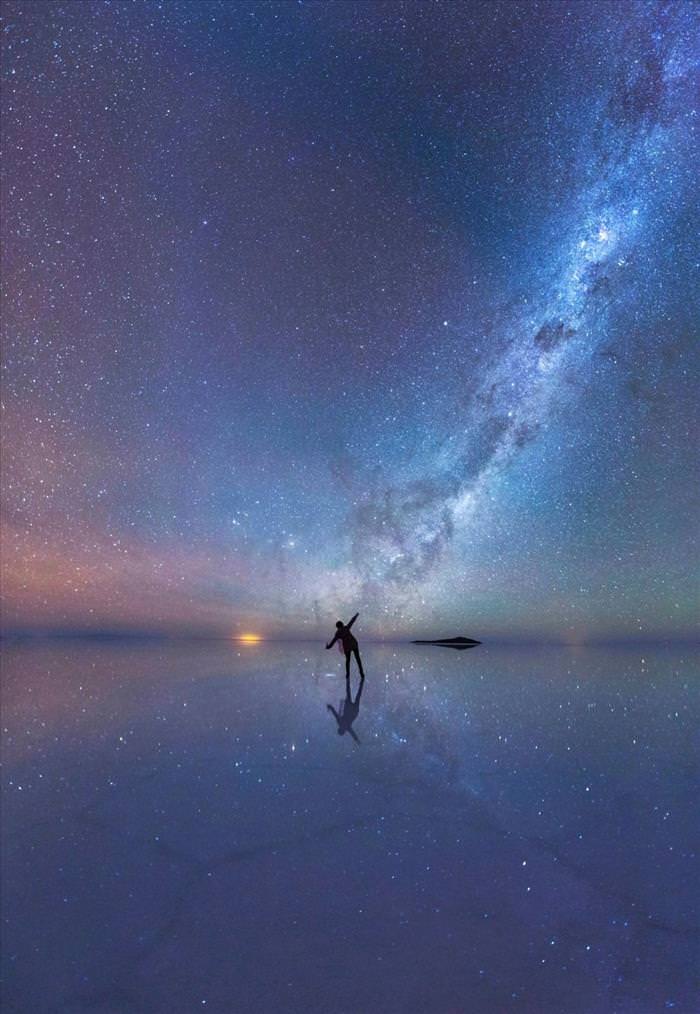 |
| An enthused stargazer walks into the purple-lighted field of stars as they reflect upon the water in the Salar de Uyuni salt desert in Bolivia. |
| |
| 16. Thor's Helmet by Adam Blok, USA |
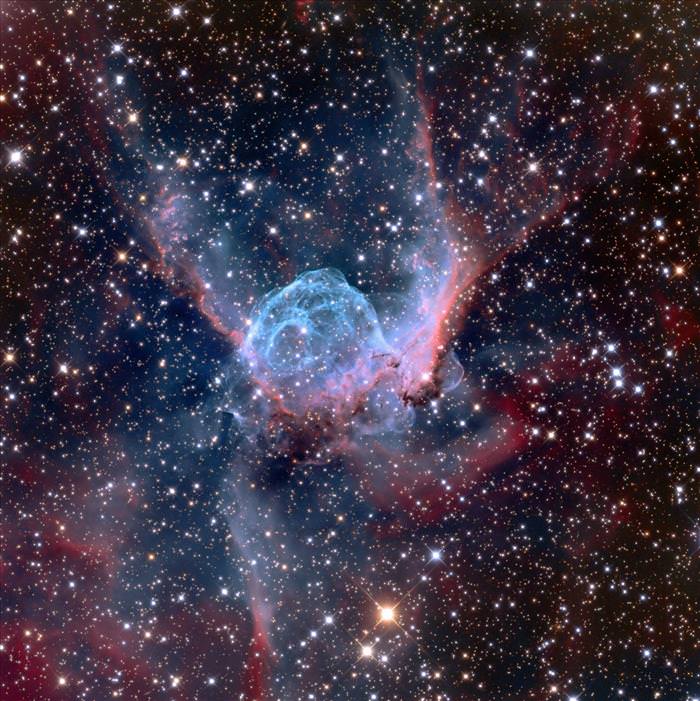 |
| The unique shape of the NGC23509 nebula gave it the name "Thor's Helmet", due to the fact it is similar in shape to the legendary helmet of the Norse god. The nebula is 11,000 light years away from us, and it's bubble shape was created due to materials getting pushed to the center of the planet by the winds constantly blowing. |
| |
| 17. The Night Sky Exploded by Chris Williams, England |
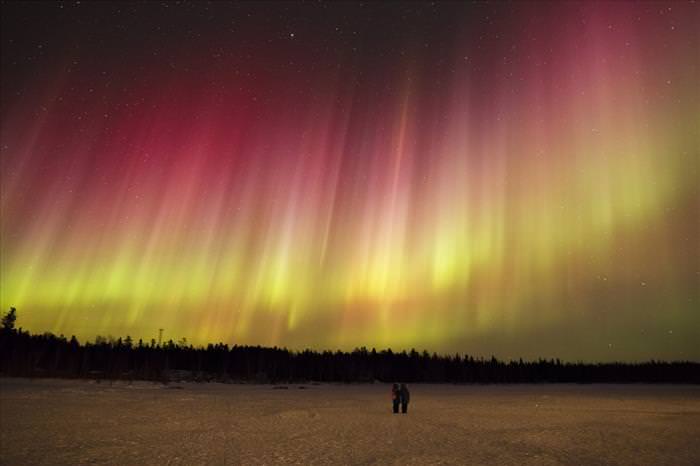 |
| A rare scene of a red glow caused by the venting of oxygen high up in the atmosphere. The glow was captured as it danced above the small fishing village of Eyrarbakki in South Iceland. |
| |
